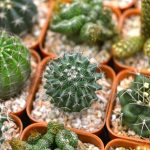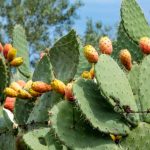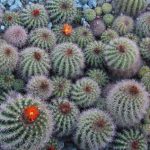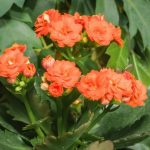Unveil the enchanting world of Opuntia microdasys, also known as the bunny ears cactus, a charming and low-maintenance addition to your botanical collection. Dive into the details below!
Seeking a unique plant companion? Opuntia microdasys, a captivating species, presents a deceptive charm with its paired pads resembling fluffy bunny ears. Despite its adorable appearance, this cactus boasts sharp hairs that demand cautious handling.
Fondly referred to as the bunny ears cactus, this plant transitions from a red hue to a lush green as it matures. Its prickly “fur” varies in shades of white, yellow, or reddish-brown, depending on the variant. Adorned with exquisite creamy yellow, bowl-shaped flowers, it later yields red or purple fruits upon reaching maturity.
Basic care for Opuntia microdasys is relatively straightforward, yet its prickly demeanor adds an element of excitement to the gardening experience.
Recommended products for nurturing Opuntia Microdasys:
Handy Care Tips
Exploring Opuntia Microdasys
While often called a bunny ear succulent, Opuntia microdasys belongs to the cactus family. Notably, cacti feature areoles, raised portions sprouting spines or glochids. The bunny ears cactus sports dotted glochids, clusters of hair-thin prickles that can easily disperse in the wind or embed in the skin. Handle this charming yet prickly plant with care to avoid any surprises.
Always don protective gloves when tending to any cactus, especially varieties like Opuntia microdasys, to shield yourself from its delicate spines. Opt for nitrile-coated gloves for effective protection against the cactus’s prickly defenses.
When handling Opuntia Microdasys, you can try using newspaper or silicone tongs to avoid damaging the plant. Metal tongs may harm the plant, so it’s best to use gentle tools. To remove any prickles that stick to you, tweezers or liquid glue can help.
Opuntia microdasys originates from the Mexican deserts, requiring a dry environment above 45° F consistently. If you reside in a desert area, it can thrive outdoors. Otherwise, plant it in a container for indoor cultivation, ensuring it receives adequate sunlight.
Different Varieties of Opuntia Microdasys
While the care for different Opuntia Microdasys varieties remains similar, their distinguishing features lie in the color and shape of their glochids and pads. Here’s a glimpse of some popular types:
Opuntia Rufida, ‘Cinnamon Bunny Ears’, ‘Blind Prickly Pear’
This subspecies thrives in Texas and Mexico, identified by its reddish-brown or cinnamon-hued glochids. It shares similarities with Opuntia microdasys but is known as ‘Blind Prickly Pear’ due to its potentially harmful glochids.
Opuntia microdasys var. albispina, ‘Angel Wings’
This compact shrub features white fluffy glochids and grows akin to a typical Opuntia microdasys specimen.
Opuntia Microdasys Var. Pallida, ‘Polka Dot Cactus’
The pallida variety showcases pale to golden yellow spotted glochids with flowers sporting a dark green center.
Opuntia microdasys var. pallida f. Cristata, ‘Funny Bunny’, ‘Monstrose Bunny Ears’, ‘Crested Bunny Ears’
Descended from the yellow pallida, this variant exhibits uniquely curved paddles resembling coral, earning it the moniker “Funny Bunny.”
Caring for Opuntia Microdasys
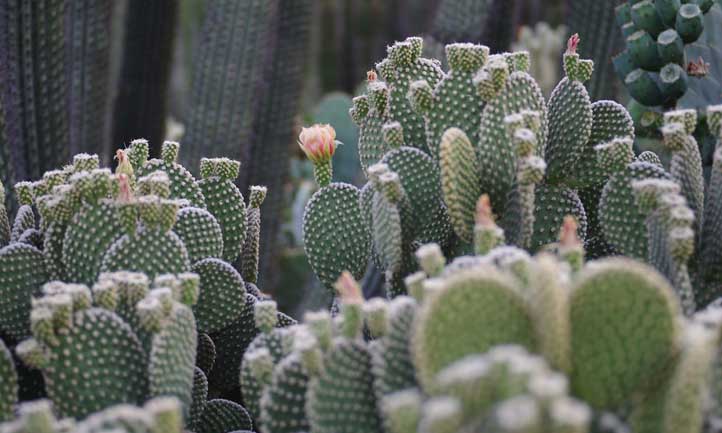

Creating a desert-like environment is crucial for maintaining Bunny Ears, ensuring they remain healthy and vibrant.
During their winter dormancy, indoor care adjustments are necessary. Here’s a quick glance at Opuntia microdasys care:
Light & Temperature
Opuntia microdasys thrives on ample sunlight, requiring approximately 6 hours daily. While full sun is ideal, partial shade can also suffice. Indoors, positioning the cactus near a south-facing window guarantees optimal light exposure.
During the winter, reduce direct sun exposure to partial light for your Bunny Ears’ well-being.
Remember, this cactus is sensitive to cold temperatures below 45° F (7° C). In such climates, using a pot that can be moved indoors when necessary is advised.
For winter indoor care, maintain a slightly cooler temperature (around 50-65° F/10-18° C). Lower temperatures during dormancy, especially below 55° F (13° C), can encourage summer flowering.
Water & Humidity
Given their desert origins, Bunny Ears prefer infrequent watering and well-drained soil. Allow the soil to dry out completely before the next watering, occasionally even leaving it dry for a day or two.
When watering, ensure a thorough soak until excess water drains from the pot’s bottom. Underwatering is preferable to overwatering for cacti like Bunny Ears.
Both overwatering and underwatering can lead to wilted or discolored appearance. In case of any issues, check the soil moisture first.
If your soil retains excess moisture despite being well-draining, consider using a porous bare clay pot for improved evaporation.
During winter dormancy, limit watering significantly or pause altogether. Greyish paddle coloration during this period is normal.
Soil
Properly-draining soil is essential for angel wing cactus health. While store-bought cactus soils are available, you can easily create your own mix by combining potting soil with perlite or bark.
Fertilizer
Apply fertilizer occasionally from spring to fall or a few times in summer, ideally every other watering session.
Opt for a low-nitrogen liquid fertilizer (e.g., 5-10-10) diluted to half strength with water. Additionally, specialized cactus and succulent fertilizers at full strength are suitable alternatives.
Avoid fertilizing your Bunny Cactus during the winter months.
Repotting
Although Opuntia microdasys grows slowly, it gradually spreads. Choose a pot that accommodates growth without being excessively large, allowing efficient use of gardening space. With appropriate sizing, expect
To ensure the optimal growth of your Bunny Ears Cactus, it is recommended to repot the plant every 1-2 years. When undertaking this task, it is advisable to do so post-bloom during the summer months. After repotting, water the cactus regularly until the roots become established.
Propagation
If you wish to expand your collection and propagate more of these charming succulents, the Bunny Ears Cactus can be easily propagated from cuttings. When taking a cutting, make sure it is at least 1” tall. Gently remove the paddle by pulling or twisting it at the base. If it doesn’t detach easily, use a sterile knife for a clean cut.
Allow the cutting to dry and callous before planting by leaving it exposed to air. Optionally, dipping the dry end in rooting hormone can facilitate the rooting process. Once calloused, plant the cutting upright in well-draining soil. If it’s too large to stand upright, laying it on top of the soil is acceptable. Keep the soil moist until roots appear and then provide adequate sunlight for optimal growth.
Maintain consistent soil moisture until roots are established. Test root development by gently wiggling the cutting to check for resistance. Once rooted, regular watering in the first year will support healthy root expansion.
Utilizing cuttings for propagation is a simpler and quicker method compared to using seeds.
Pruning
Although Opuntia microdasys typically does not require pruning, it can be done for aesthetic purposes. When pruning, use a sharp, sterile knife to cleanly remove unwanted paddles. Ensure the pruned area remains dry until a callous forms over the wound.
Troubleshooting
Growing Problems
A common issue with the Bunny Ears Cactus is drooping, which is often an indicator of stress. Factors to investigate include overwatering or underwatering, inadequate sunlight exposure, and potential temperature damage.
Brown or black spots may signify frost or sun damage, which is cosmetic but irreversible. Adjusting watering and light conditions can help alleviate these growth issues.
Pests
Preventative measures against pests are crucial to maintaining the health of your cactus. Look out for scale insects, such as Mealybugs, which can cause wilting, discoloration, and growth stunting. Ants may indicate a scale insect infestation, as they feed on the sugary secretions produced by these pests.
Control pest infestations by using soapy water solutions or insecticidal soaps to deter and eliminate the insects. Applying rubbing alcohol or specific insecticides directly to the pests can also be effective.
Diseases
Opuntia microdasys is susceptible to stem and root rot, often caused by overwatering or bacterial infections. To remedy rot issues, improve soil drainage, remove affected plant parts, and allow the plant to callous before repotting in fresh soil.
In severe cases, where the cactus is extensively damaged, salvaging healthy paddles for propagation may be the best course of action.
FAQs
Q. Why are my cactus paddles growing long and skinny?
A. Extended paddle growth indicates insufficient sunlight. Relocate the cactus to a sunnier spot to prevent further elongation.
Q. What causes a drooping cactus?
A. Drooping can result from over or underwatering, insufficient sunlight, diseases, or temperature-related damage.
Q. How can I remove small cactus thorns?
A. Use tweezers if the thorns are visible, or apply liquid glue to the affected area and peel it off once dry for embedded thorns.
Last update on 2024-06-21 / Affiliate links / Images from Amazon Product Advertising API


